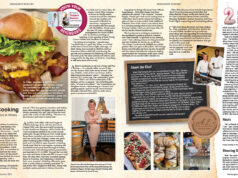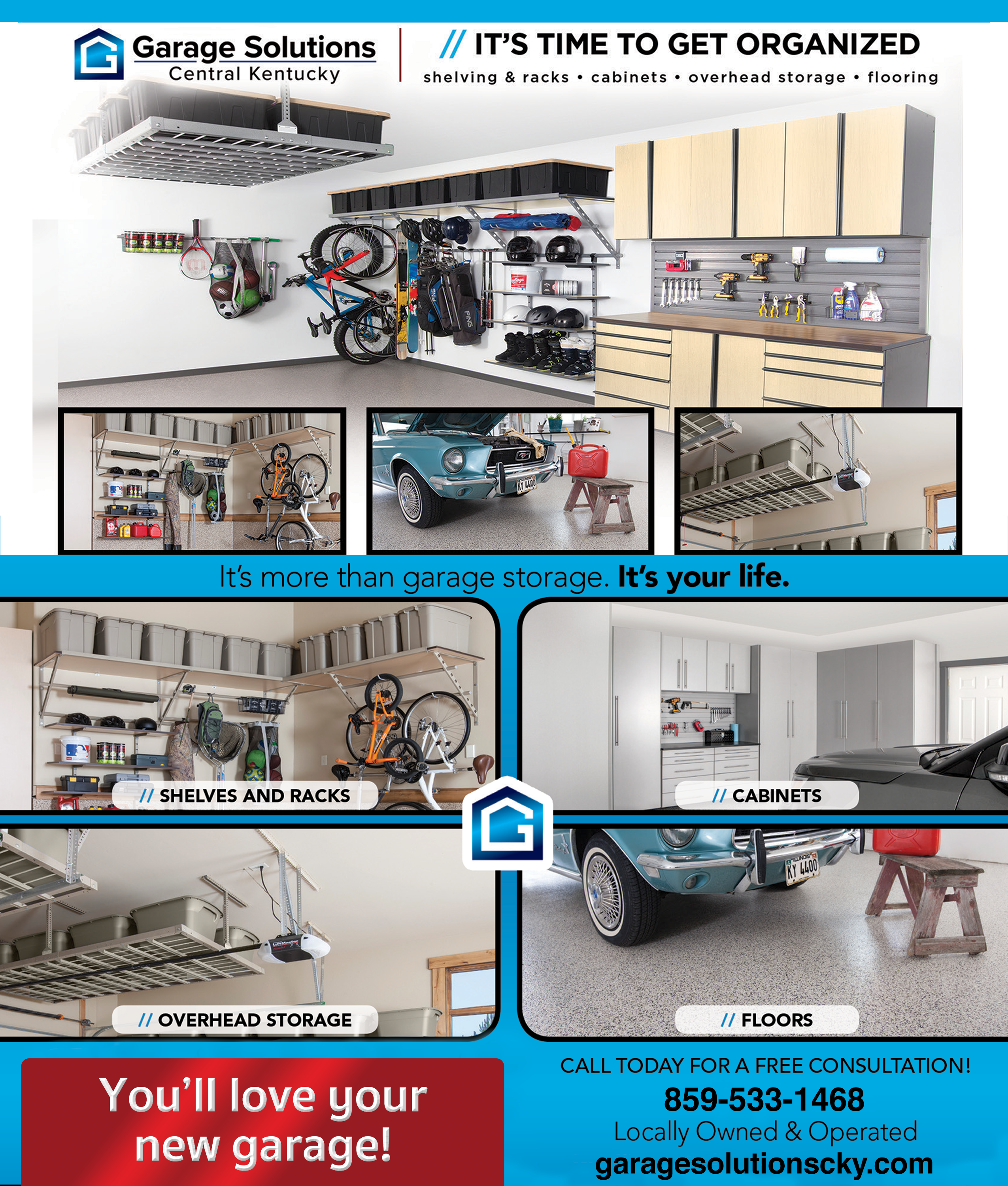Perhaps sensing the likes of Amazon breathing down their necks, retailers are attempting to harness the power of mobile devices to deliver new customer experiences. These attempts to capture the mobile device zeitgeist are now reaching the most stalwart of the brick-and-mortar retailers, grocery stores.
In Hamburg, there’s now a variety of options.
Some of these services, like Kroger’s ClickList, are home-grown jobs, tying into existing infrastructure and keeping the customer experience in one location. Others, like Instacart and Shipt, are ambitious third parties looking to capitalize on the success of the “sharing” economy, so named because 100 percent of payroll tax liability is “shared” with the person doing the work.
Instacart and Shipt work with retailers such as Meijer, Costco, Whole Foods and Kroger to deliver groceries directly to your door for a fee, possibly another fee, and maybe a slight fee.
To find out whether these services really deliver the goods, I attempted to test a few out in the name of both science and laziness. Will these new services have you relegating the act of grocery shopping to the peasants? Or will you steadfastly remain the shopper who’s counting cart items to see if you can hit the express checkout? The answer will … probably not surprise you.
A Whole New World
From the outset, it should be noted that all of these services require something that regular grocery shopping does not: decisiveness. If you’re someone who can’t decide between paper and plastic, this could be a pro or a con.
One of the oddly challenging aspects of setting up test runs of these services was the amount of deliberation that went in to ordering a list of items.
Whereas I’m the kind of person who walks into a store with a list that says, “Cheese, bread, drinks, toothpaste,” defining a grocery list for someone else to shop requires a level of specificity usually reserved only for engine components of luxury cars.
“Cheese” becomes “Kroger brand cheddar, 8 oz., finely shredded,” while “bread” creates a list of near-infinite variety. I had to actually go into the bathroom and see which brand, flavor and strength I usually purchase in toothpaste, and I still eventually just gave up on it.
Luckily, when it comes to overindulging on high fructose corn syrup, I know my brand of caramel-colored poison like the back of my hand, so adding a drink to the list was simple. Still, this style of shopping eliminates the “I know it when I see it” aspect of my usual shopping trips. It also seems to require more effort somehow, which cuts against the convenience inherent in not having to do the actual shopping.
The silver lining to this deliberative shopping cloud is that there is less chance of impulse buying. Here’s where I proudly state that I am absolutely putty in the hands of the grocery marketing gods. I will enter a grocery store to buy deodorant and some seltzer water, and I will emerge $64 later with exotic fruit, a reduced price family pack of t-bone steaks, two different kinds of ice cream (it was on sale!), buy one get one candy bars, store brand beef jerky and some discounted Star Wars figurines. And I’ll have forgotten the deodorant.
When you pick out each item by brand, variety and quantity, you have to know what you want going in. There’s very little to browse, although the apps do try and get you to do so. You’ll wind up actually just getting the two items you wanted, rather than wondering what guayaba nectar is and if you should bring some extra home, just in case the kids like it.
With these initial caveats in mind, we now turn to the experience of using the services.
ClickList
Besides being a potentially embarrassing semi-spoonerism, ClickList is a little bit of a mess. ClickListIt’s is located inside the Kroger app, and I have high praise for the non-ClickList section of the app. I was able to add several e-coupons to my Kroger Plus card, and VOILA, they were there at checkout. The app also provides a list of items you purchased previously, which was kind of like seeing all my poor life choices set out in black and white. It was a pretty cool experience, so I figured ClickList would fare similarly. It did not.
First things first, finding ClickList in the app is a bit of chore, and I’ll be honest that I’m still not quite sure how it works. I think you have to have a store selected as your primary store that offers ClickList, but that’s only because I’m near-positive ClickList actually disappeared as an option in the app a few times. It’s embarrassing to admit this because I’m usually the person who you don’t want to talk to at parties when it comes to technology (or anything else, but let’s stay focused), but ClickList had me flummoxed, and that will play out into what happened later.
My first attempt at ClickList failed because of my well-known chicken addiction. I noticed my usual Kroger would have a sale on rotisserie chicken one day, so before leaving work that day, I pulled up the app and made a chicken-centric picnic food playlist that would make Yogi Bear drool until dehydration. Then the app asked me to pick a different store, as my usual joint did not have ClickList. Upon picking the next-closest store, the app kindly informed me that the chicken would not be available at a discount. Obviously, this was unacceptable.
Discount chicken: 1, ClickList: 0.
My next attempt somehow fared worse. Thinking, unrealistically, that it might be ready in an hour or so, I chose a location I would be driving past so I could swing by. My optimism was misplaced – my order would not be available until the next day. I dutifully picked a time for pickup and submitted the order anyway, before realizing that the location I had chosen would be roughly an entire city away from where I wanted to be at the appointed time. Luckily, the app allowed me to edit my order, and sure enough, I could change the location where I wished to pick up the order. I submitted the change, happy in the knowledge that everything worked as it should.
I arrived slightly late to the intended destination the day at the specified time. No order waiting for me. Not on the list at all. So I called the original store, which also did not have an order waiting. They checked for my order number – yes, they had an order waiting for me, ready for the next day.
In other words, wrong place at the wrong time. I’ll concede that my attention to detail would allow for a slip-up of days, so it may be that the wrong date really is the date I entered. There is no stack of Bibles high enough, however, to prevent me from swearing that I changed the location on my order in the app. I know this, because once I did make the change, the app wouldn’t let me modify the items in the cart unless I changed the pickup store back to the original location. The nice person on the other end of the phone canceled the order at my request, but I still got a notice reminding me to come pick up my order the next day. Nope. I may have punched in the wrong date somehow, but I definitely changed the location. Goodbye, ClickList.
Had I used ClickList beyond an introductory set of orders, the fee would be $4.95 to have someone else shop and bring the groceries out to my car. While that’s lower than the other delivery services, it’s still nearly five bucks you have to pay for the convenience of still having to drive to the store.
Pros: Lower fee; earn Kroger Plus points; no tipping drivers who come to your house
Cons: unnecessarily confusing app; still have to actually drive to the store, which precludes beer runs from drunken partygoers
Instacart and Shipt
Instacart and Shipt are similar to Uber and Lyft and any other “sharing” app where you summon an anonymous stranger to perform tasks at your whim, this time for grocery shopping. Instacart will shop at several major retailers, including Meijer, Costco, Kroger and Whole Foods, depending on which ones are in your particular area. Shipt recently partnered with Meijer to provide their official grocery delivery service for the Lexington area.
There are two big differences between Instacart and ClickList off the bat. First, Instacart is an actual delivery service, as opposed to a “delivery across two rows of the parking lot” service. Second, Instacart will bring your groceries to you the same day and even maybe in the same hour, instead of making you wait. (To be fair to ClickList, it did say that some locations had same-day service now.)
With Instacart, I opened the app, picked out the store I wanted foodstuffs from, made my list and a little over an hour later a guy showed up at my door with two nights’ worth of dinner (and one solid night’s worth of heartburn – I should have had him bring antacid as well).
Instacart adds an extra layer of control to the proceedings as well – for each item, you can make notes, pick substitute items in case the store is out of stock, and even choose not to get the item if it’s not in stock. While my particular shopper was shopping, I got a text saying the store was out of the particular specified hoagie rolls I had requested, and the shopper proposed a substitute. Click the link in the text to pull up the app, approve the substitution, and PRESTO! Quick and easy changeout.
All in all, Instacart was a pretty solid all-around experience, with one caveat: the fees. Naturally, it would cost more to have someone bring you the groceries, rather than driving to the store yourself, but Instacart has a pretty elaborate fee structure. First, there’s a “delivery” fee you pay that depends on how soon you want the order and how many items you have. This starts at $5.99, but there’s also an “Instacart Express” option that costs $149 a year and works in much the same way Amazon Prime does. But that’s not all in terms of fees. Next comes the “Service Fee,” which is confusing – it’s automatically applied, but you can opt out of paying it, and there’s some language in there about splitting it among different folks who do the shopping and the driving. So it’s sort of like a tip, but for someone other than the driver. Then there’s the tip for the driver. You always tip the driver. Always. So that’s three separate fees, and that’s on top of any sly markup that may or may not take place on the grocery items themselves.
Shipt works a little differently, fee-wise, using a fee system similar to a gym membership. You can pay a monthly fee or get a discount on paying up for the year, and orders of $35 or more don’t have a delivery fee. Like Instacart, there is a little markup in every item ordered that covers expenses. At the same time, paying $14 a month just to for the possibility of having the odd grocery order delivered also comes across as a little steep (and prohibitive to giving it a test run).
Pros: SUPREME LAZINESS; can have Cheetos delivered while intoxicated; no need to stop binge-watching “Unbreakable Kimmy Schmidt”
Cons: the fees; inability to earn precious shopping reward loyalty points; the embarrassment of some random person knowing your deodorant scent, your favorite flavor of ice cream, your dire need of Immodium A-D, and your predilection for wearing cut-off Wrestlemania t-shirts when lounging around binge-watching “Unbreakable Kimmy Schmidt” at home; the fees; also, the fees.
In conclusion, while I am certainly lazy, I’m also cheap, and the cost of these services adds up quickly. There are those for whom this sort of shopping would be a boon — imagine if you’re wealthy, and have a broken foot — and there are times when the added costs may be worthwhile, such as when buying the ingredients for Thanksgiving dinner, or during a flu season. Sometimes it’s worth any amount of money to beat the crowds.
Still, it’s hard to beat the siren call of wandering around Meijer or Costco or Kroger on an impulse buy spree. And that guayaba nectar really is delicious.













